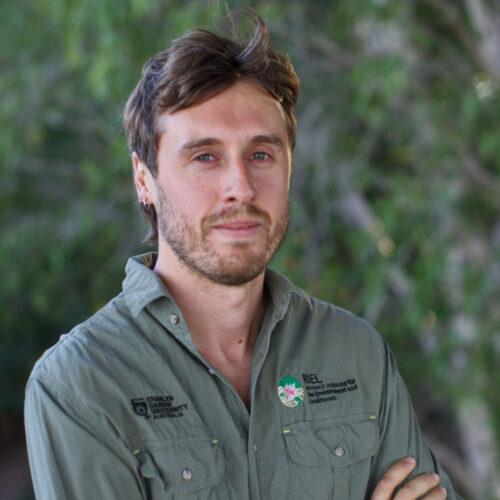Dr Adam Smart
Research Fellow, University of Newcastle
See Dr Smart’s full research profile here.
E: adam.smart@newcastle.edu.au
Bio
Dr Smart specialises in using quantitative models and field data collection to enhance conservation decision-making in Australia. His expertise lies in statistical modelling and simulation to address pressing conservation issues, with a strong emphasis on implementing research to guide best practices in wildlife monitoring and management effectiveness.
Research outputs linked to policy change and decision-making
- Identifying biodiversity and bush-tucker hotspots for targeted management in Kakadu National Park
Dr Smart leads data analysis in a collaborative project between Parks Australia and NESP researchers, developing predictive species distribution models for over a thousand species in Kakadu National Park. These models support spatial prioritisation to identify critical areas for biodiversity and bush foods, incorporating Indigenous knowledge to create data layers for significant bush food sites. This initiative equips land managers to prioritize conservation efforts effectively, benefiting both biodiversity and Traditional Owners.
- Managing and monitoring resilience in Australia’s national parks
Dr Smart heads the research component of the ‘Monitoring in Uluru-Kata Tjuta National Park’ project. This initiative aims to develop a revitalised flora and fauna monitoring program for this World Heritage Site, managed jointly with the Anangu Traditional Owners. By integrating historical data, statistical modelling, modern survey methods, and indigenous knowledge, the program addresses principles acknowledging the park’s cultural and natural values. The new design will guide future surveys and has potential applicability across central Australia, offering valuable case studies and analytical tools for other protected areas.
- Research to support the management of priority desert threatened species
Dr Smart contributes modelling and statistical expertise to projects focusing on two priority desert threatened species: Tjakura (great desert skink) and the night parrot. For Tjakura, standardised monitoring recommendations and insights into fire regime impacts have been developed, supporting improved fire management practices. For the night parrot, Dr. Smart’s work involves constructing the first predictive distribution model using contemporary detections, habitat mapping, and Indigenous knowledge. This model will be validated through on-ground surveys by ranger groups, directly informing the research plan for night parrot conservation in Western Australia.
- A tool for evaluating biodiversity monitoring programs in national parks
Dr Smart contributed to a research team focused on supporting conservation efforts on Christmas Island. The project utilised a computer simulation tool, SPOTR, which predicts potential future monitoring data based on current species distribution maps and detection probabilities. This approach was further enhanced to factor in the costs of monitoring. By assessing the statistical power of different monitoring programs, the team was able to optimise the design, reducing costs while enhancing the effectiveness of forest bird monitoring on Christmas Island. The SPOTR tool is publicly available and can be applied to compare the efficiency of alternative monitoring strategies, making it a valuable resource for conservation planning.
- Wildlife monitoring after natural disasters
Dr Smart recently contributed to designing reconnaissance surveys that assessed the impact of the 2019–20 wildfires on native species across Eastern Australia. This project developed a workflow to rapidly create predictive distribution models for numerous species, integrating real-time fire severity data to identify post-fire monitoring locations, ultimately guiding the allocation of fire-recovery funds for threatened species.
- Environmental DNA sampling to detect invasive species
Dr Smart has been involved in validating the use of environmental DNA (eDNA) as a tool to detect aquatic invaders in semi-urban landscapes. The deployment of eDNA offers cost-effective, widespread surveillance, enabling rapid detection and timely management of invasive species like Lissotriton vulgaris, thereby preventing their establishment. This research has directly supported the monitoring and control of invasive species.
Current academic employment and positions
- 2022–present: Research Fellow, School of Environmental and Life Sciences, University of Newcastle
- 2023–present: Research Fellow (Adjunct), Research Institute for the Environment and Livelihoods, Charles Darwin university
Highest qualification
- 2021: PhD, University of Melbourne.
My Projects
 Current project
Current project Completed project
Completed project
NESP RLH, 2021-2027NESP, 2015-2021NERP, 2012-2015TRaCK, 2005-present


